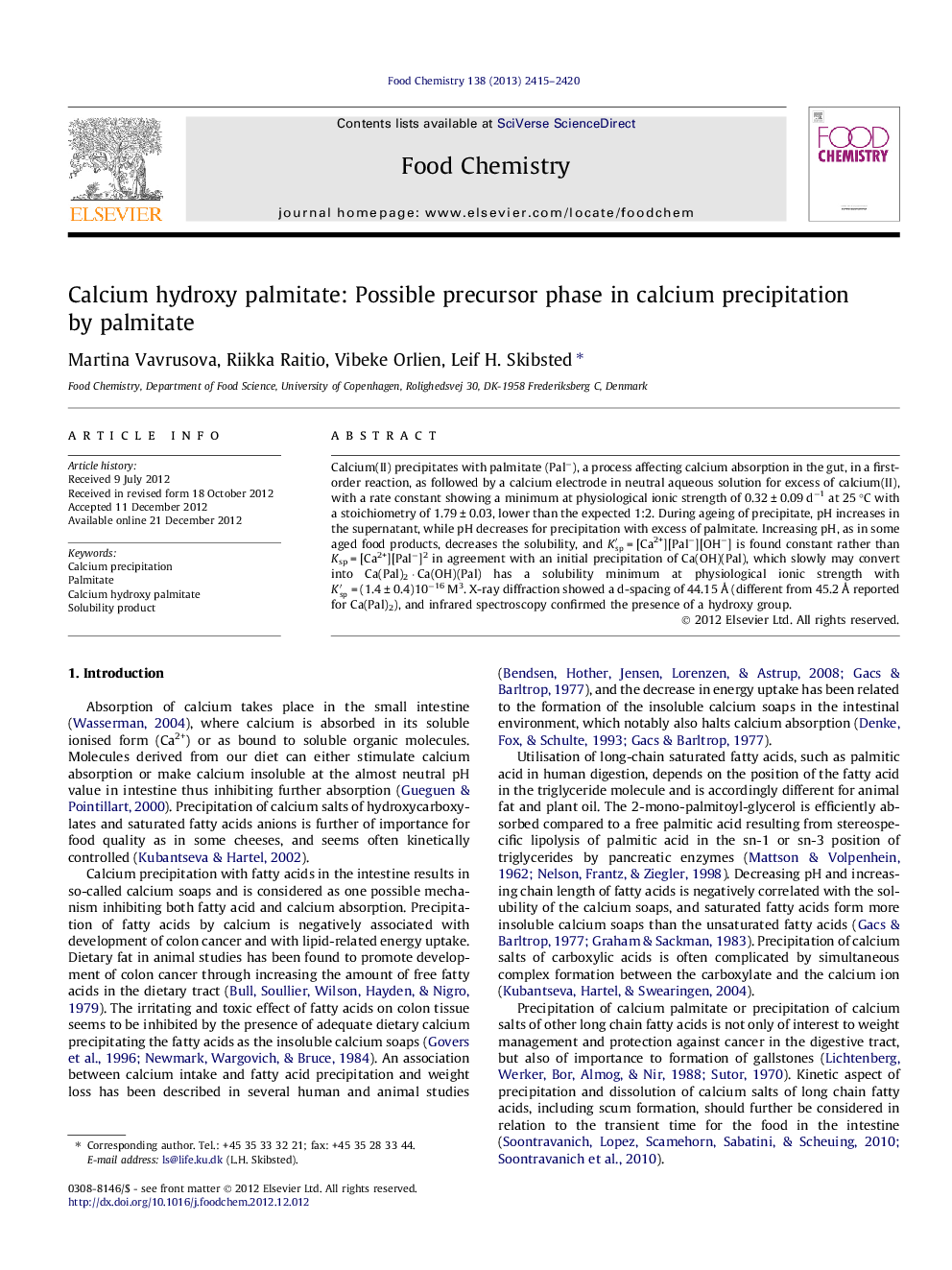| Article ID | Journal | Published Year | Pages | File Type |
|---|---|---|---|---|
| 1185524 | Food Chemistry | 2013 | 6 Pages |
Calcium(II) precipitates with palmitate (Pal−), a process affecting calcium absorption in the gut, in a first-order reaction, as followed by a calcium electrode in neutral aqueous solution for excess of calcium(II), with a rate constant showing a minimum at physiological ionic strength of 0.32 ± 0.09 d−1 at 25 °C with a stoichiometry of 1.79 ± 0.03, lower than the expected 1:2. During ageing of precipitate, pH increases in the supernatant, while pH decreases for precipitation with excess of palmitate. Increasing pH, as in some aged food products, decreases the solubility, and Ksp′ = [Ca2+][Pal−][OH−] is found constant rather than Ksp = [Ca2+][Pal−]2 in agreement with an initial precipitation of Ca(OH)(Pal), which slowly may convert into Ca(Pal)2 · Ca(OH)(Pal) has a solubility minimum at physiological ionic strength with Ksp′ = (1.4 ± 0.4)10−16 M3. X-ray diffraction showed a d-spacing of 44.15 Å (different from 45.2 Å reported for Ca(Pal)2), and infrared spectroscopy confirmed the presence of a hydroxy group.
► Precipitation of calcium with palmitate is a slow process. ► Ca(OH)(Pal) precipitates as precursor for calcium palmitate. ► Ca(OH)(Pal) has minimum solubility at physiological ionic strength.
